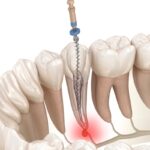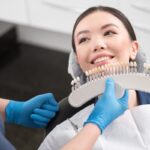When it comes to oral care, most of us believe we’ve got it all figured out: brush twice a day, floss occasionally, and rinse with mouthwash. But even with the best intentions, common mistakes can slip into our routines, slowly impacting our dental health without us realizing it. If you’ve ever experienced bleeding gums, lingering bad breath, or plaque build-up despite regular brushing, it could be due to poor technique or overlooked habits.
If you’re looking to improve your daily routine or get personalized care from a dentist in Rutland, identifying and correcting these small missteps can make a big difference in the long run.
Let us illuminate the most prevalent oral hygiene errors individuals commit and, more importantly, how to break them.
Brushing Too Hard or Abrasively
The harder you brush, the cleaner your teeth are supposed to become. False, heavy brushing will erode enamel and irritate your gums.
How to correct it:
- Use a soft-bristled toothbrush.
- Brush using gentle, circular motions.
- Aim for two full minutes twice a day.
- Let the toothbrush do the work; no need to scrub.
Brushing should feel like a massage for your gums, not a workout for your arm.
Not Knowing How to Brush Teeth Properly
Even if you brush your teeth twice a day, you may be brushing incorrectly. Bad brushing habits can deposit plaque, particularly near the gum line and on the inner surfaces of teeth.
Proper technique involves:
- Position your toothbrush at a 45-degree angle.
- Brushing properly the outer, inner, and chewing surfaces of teeth.
- Brushing starts in a new position each time to prevent spots.
- Changing your brush every 3 to 4 months.
The simple step of learning how to brush properly avoids cavities and keeps your gums healthy.
Skipping Flossing or Doing It Incorrectly
Flossing is essential, but it’s often rushed or skipped. If you’re guilty of this, you’re not alone. Many people also floss incorrectly by snapping the floss down or skipping the same areas repeatedly.
Better flossing habits:
- Gently slide the floss between your teeth using a zigzag motion.
- Wrap the floss around each tooth in a “C” shape to reach under the gumline.
- Change to new floss pieces between each tooth.
- Floss once a day, even in bed.
Correcting flossing mistakes can make a big difference in gum health and fewer plaque accumulation.
Brushing After Meals
It might seem like a good idea to brush after meals, but to do so, especially after acidic foods, is more harmful than beneficial. Acidic foods weaken enamel temporarily, and brushing too soon erodes it.
Do this instead:
- Rinse your mouth with water.
- Wait 30 minutes before brushing.
- Chew sugar-free gum to stimulate saliva and neutralize acids.
Ignoring Your Tongue
Your tongue is full of bacteria, food debris, and dead cells. If not cleaned, it will lead to halitosis and a coated look.
Solution:
- Scrape your tongue daily.
- Gently brush your tongue back and forth with your toothbrush.
- Clean from the back of your tongue to the front.
This one simple habit can make a gigantic difference in your whole dental hygiene routine.
Overusing Whitening Products
While whiter teeth may be appealing, excessive use of at-home whitening strips or toothpaste can lead to sensitivity and enamel erosion.
Safe approach:
- Use dentist-approved whitening products.
- Follow the directions strictly.
- If you’re unsure, consult a professional before starting treatment.
Whitening should never come at the cost of your dental health.
Using the Same Toothbrush for Too Long
Old, frayed bristles are ineffective and may harbor harmful bacteria. This is one of the more overlooked common teeth cleaning mistakes.
What to do:
- Replace your toothbrush every 3–4 months.
- If bristles are splayed, replace them sooner.
- Always replace it after a cold or flu.
Not Following A Consistent Routine
Skipping brushing or flossing just once might not seem like a big deal, but consistency is key when it comes to preventing tooth decay and gum disease.
Consistency tips:
- Set reminders on your phone.
- Pair brushing with another habit (like after your morning coffee).
- Use apps that track your dental hygiene.
Knowing how to improve oral hygiene starts with maintaining a daily schedule.
Relying Solely On Mouthwash
Mouthwash can freshen your breath, but it’s not a replacement for brushing and flossing. Think of it as an add-on rather than a main event.
Use it wisely:
- Opt for alcohol-free formulas for sensitive mouths.
- Use mouthwash after brushing and flossing not instead of.
- Swish for 30–60 seconds for full effect.
Skipping Regular Dental Check-Ups
Many people assume that if their teeth look and feel fine, there’s no need to visit the dentist. However, dental issues often develop silently.
Why regular visits matter:
- Catch problems before they escalate.
- Get a professional cleaning that removes hardened plaque.
- Receive personalized advice for better care at home.
Booking regular appointments with a dentist in Rutland ensures your oral health is being monitored and supported year-round.
Stop the Small Mistakes Before They Become Big Problems – Visit Acorn Dental & Implant Center!
Oral hygiene goes far beyond brushing twice a day. By becoming aware of these common mistakes and actively correcting them, you can protect your teeth, strengthen your gums, and enjoy a healthier, brighter smile. Schedule your next dental checkup with Acorn Dental & Implant Center, Your smile deserves expert care!







